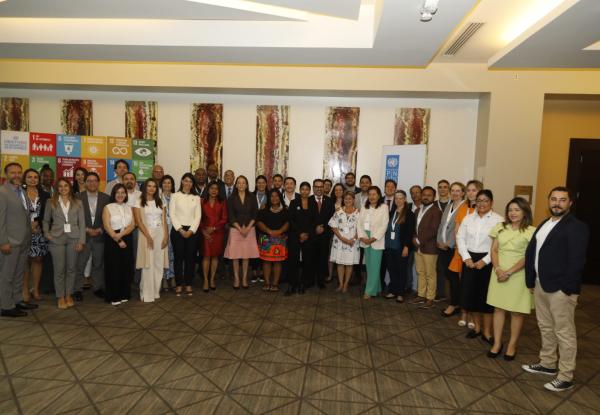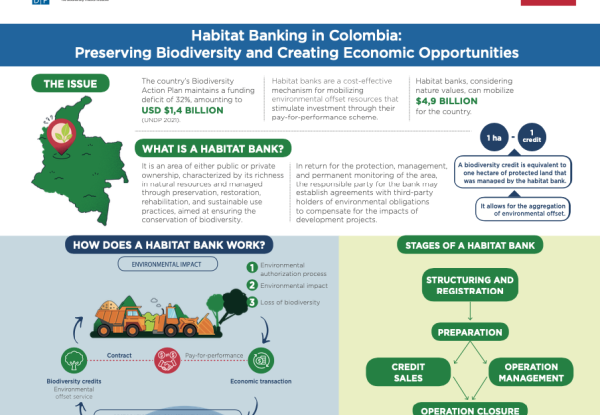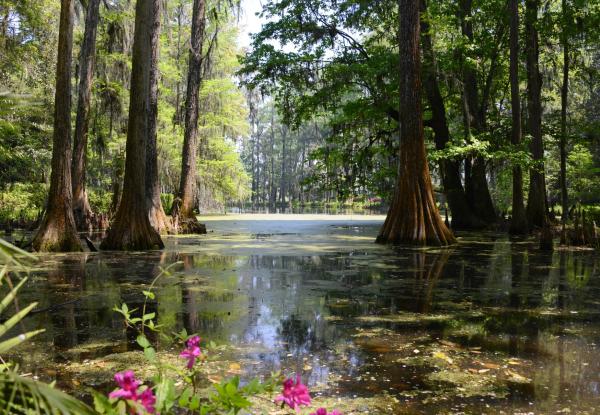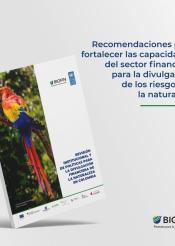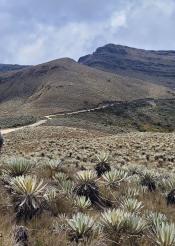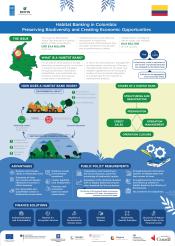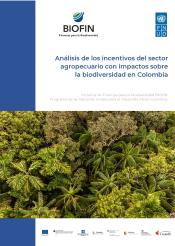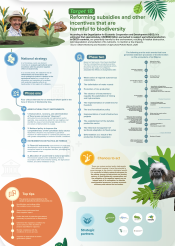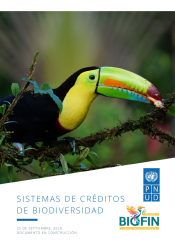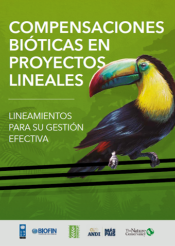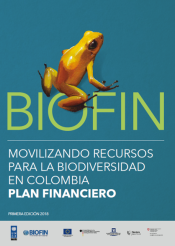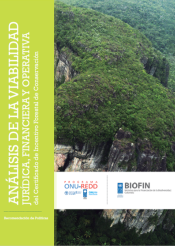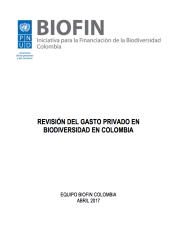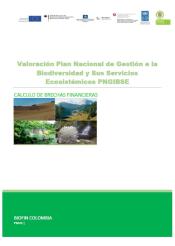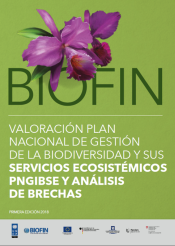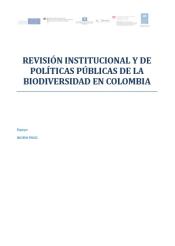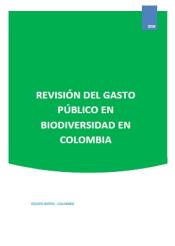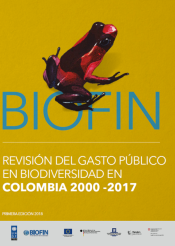Colombia
The BIOFIN project began activities in Colombia in March 2015, joining a group of approximately 40 beneficiary countries for this initiative. Within this group, 11 countries belong to the Latin America group.
Colombia is the most biodiverse country per square kilometer in the world. Biodiversity management affects the social and economic development of a large portion of the population. Nevertheless, biodiversity is a matter of interest for the national economic policy due to its impact.
The analysis and implementation of BIOFIN’s strategy in Colombia have allowed a detailed examination of investments in the protection, conservation, and sustainable use of biodiversity. It also includes the inclusion of sectorial policies and strategies for fair and socially equitable distribution. These efforts aim to determine tendencies, financing gaps, and opportunities aimed at meeting the country’s goals for biodiversity in the meetings of the parties to the Convention on Biological Diversity.
Our strategy
As an essential part of the National Biodiversity Strategy and Action Plan in Colombia, BIOFIN Colombia promotes financial mechanisms that contribute to closing the financial gap for biodiversity management. It does so through the strengthening of national and local planning processes for biodiversity management and the formulation and implementation of financial solutions to increase or redirect investment for biodiversity management. Our strategy includes the following objectives:
- To optimize the allocation of current public expenditure on biodiversity conservation.
- To improve the effectiveness of economic and financial instruments related to biodiversity management.
- To assess, facilitate and intensify the participation of the private sector in biodiversity management in the country.
- To innovate in financial and economic mechanisms that contribute to the financial leverage of proposed goals.
- To articulate biodiversity finance with peace, green growth, and climate change finance.
- Consolidation of BIOFIN’s technical committee with the participation of the Ministry of Environment and Sustainable Development, the Ministry of Finance, the National Planning Department, the National Administrative Department of Statistics, and the National Environmental Licensing Authority
- Design of a strategy and joint action plan between the BIOFIN project and the Readiness for Green Climate Fund within the framework of the Financial Management Committee of the National Climate Change System - SISCLIMA (acronym in Spanish).
- Proposal of economic analysis, financial valuation, and budget design, including the biodiversity variable of the first Colombian project to be presented to the Green Climate Fund.
- Participation in the construction of goals and indicators of the national baseline for Sustainable Development Goals - SDG, focusing on those directly associated with biodiversity.
- Connection and assessment of the economic benefits of conservation and sustainable use of biodiversity in the construction of peace in Colombia.
- Formulation and implementation of the District Program of Payments for environmental services, jointly with the District Secretary for the Environment and the Mayor's Office of Bogotá. The aim is to achieve 1,000 hectares under a conservation agreement by 2024.
- Technical support in the construction of the national policy for protected areas in Colombia by 2030 – CONPES 4050 (2021).
- Support in the formulation of projects for the conservation and restoration of protected areas and other strategic areas of environmental importance at the regional level, to mobilize resources of 1% of the current income of the territorial entities that must be invested in the environment, royalties, and carbon tax.
- Support to the Colombian government to achieve its biodiversity goals related to resources mobilization acquired in the Aichi Biological Diversity Targets from 2010 to 2020.
- Support to the Colombian government in the upgrade of the National Biodiversity Strategy and Action Plan in Colombia, according with Kunming-Montreal Global Biodiversity Framework.
- Incorporation of the technical debate on harmful incentives in the mobilization and redirection of resources for the financing of biodiversity.
- Evaluation and monitoring of the impact of COVID-19 on biodiversity finances.
Increase public investment in payment for environmental services projects.
Analysis carried out by the BIOFIN team in Colombia shows some problems that PES could help solve. Specifically, conditions of degradation and deforestation in strategic ecosystems, conflicts surrounding land use in these areas, as well as the need to generate options for agricultural producers with sustainable productive intensification that improves the provision of environmental services.
Second, the analysis also reveals that public and private stakeholders are motivated by common interests in the management and financing of actions associated with preservation and restoration of strategic ecosystems, specially related with the water ecosystem services.
Finally, the study also found that the main financial sources identified by BIOFIN to finance PES are: infrastructure works for taxes, 1% of the current income of the territorial entities that must be invested in the environment, royalties and carbon tax.
Since 2021, the BIOFIN Colombia team has been supporting the implementation of the district program of payments for ecosystem services, for protection and restoration in the strategic ecosystems that guarantee the provision of water to 7.8 million people living in Bogotá. This is the first PES mechanism implemented in a capital city that recognizes the near rural area and the benefits of ecosystem services in sustainable development.
Estimated finance result: Mobilization of up to USD$31.8 million from regional and local resources mainly, in addition to the established national financing sources.
Unlocking funds from authorized environmental offsets to reduce deforestation.
BIOFIN has supported government efforts to boost pending investments for compensation obligations through costing assessments of the obligations to establish financial information, which is currently absent. This is done to help structure the portfolio for investment projects located regionally and facilitate meeting points between pending offset obligations and investment projects.
In recent years, initiatives by private companies have emerged, showing the need to expand the available tools to enhance the effective execution of compensation obligations at the national level. One of these tools is "habitat banks," which facilitate private companies' fulfillment of obligations by selling them "credits" in areas where compensation requirements are merged, and actions for the preservation, improvement, or restoration of ecosystems are implemented to compensate for the negative impacts on biodiversity.
Currently, biodiversity credit systems are one of the mechanisms being implemented around the world to offset impacts, mainly through habitat banks. BIOFIN Colombia wants to boost these emerging initiatives by increasing general knowledge about them and promoting their use for the fulfilment of pending offsets. Therefore, it is worth noting that Colombia is becoming one of the leading countries in the region working on habitat banking.
Estimated finance result: Mobilization up to USD$4 million through boosting investments from pending compensation obligations by approved licensed projects.
Royalties directed at biodiversity conservation and management in environmental interest areas.
In recent years, initiatives by private companies have emerged, showing the need to expand the available tools to enhance the effective execution of compensation obligations at the national level. One of these tools is "habitat banks," which facilitate private companies' fulfillment of obligations by selling them "credits" in areas where compensation requirements are merged, and actions for the preservation, improvement, or restoration of ecosystems are implemented to compensate for the negative impacts on biodiversity.
For this reason, this financial solution will promote the use of royalties in projects aimed at the conservation of biodiversity and ecosystem services in areas of environmental interest. It includes investment projects formulated for the conservation of protected areas, paramos, mangroves, dry forests, among other ecosystems.
BIOFIN has been supporting the use of royalties in projects aimed at controlling deforestation and protecting biodiversity in territories through the strengthening of technical capacities in the processes of project formulation with innovative financial, technical, and management incentives.
Estimated finance result: Mobilize minimum USD$98 million through the enhance public budget execution and the influence in investment budget formulation.
Study to identify incentives in the agriculture sector with possible negative impacts on biodiversity in Colombia.
Since 2021, BIOFIN Colombia has been working to identify the incentives that promote economic growth and development within the agricultural sector that might have harmful impacts on biodiversity.
There were 42 policy incentives identified, of which 30 are related to rural development and 12 are related to zoning planning with an impact on biodiversity. Of these, 26 could potentially generate negative impacts on biodiversity, including incentives such as storage of rice, forest incentive certificates, special credit lines, and agricultural development credits. On the other hand, 14 of these policies could potentially generate positive impacts, such as the guarantee fund for agricultural activities and the rural microcredits fund. Finally, 4 of the 26 incentives showed a greater opportunity for reform, based on expert criteria and their closer relation to drivers of biodiversity loss.
These were analyzed, and some of them were prioritized to present options for possible reforms at the national government level. These reform options may consist of eliminating, reducing, redirecting, or greening the selected incentives.
With the reform proposal, a process of advocacy will be launched to present these incentives to policymakers and push for the necessary changes in legislative or regulatory instruments.
Institutionalization and sustainability of financial solutions in Colombia
This financial solution allows monitoring and analyzing the expenditure on the environment, biodiversity, climate change, and water. The constant updating of figures and data allows increased analysis inputs needed in the formulation of public policy.
There are different sources of information that, due to the quality and status of the data reports, make it difficult to officially report information. This occurs because the base information is composed of manual and complex procedures that affect the quality of the statistics. Hence, the interoperability mechanisms of statistics, such as the design of an application to collect information, reduce logistics timeframes and increase the time dedicated to the analysis and quality assurance of the results.
The information generated by BIOFIN provides inputs at the national and regional levels, as well as for entities, institutional sectors, economic sectors, and different investment projects, to develop national or local biodiversity strategies and action plans that contribute to the sustainability of environmental investment
For example, in recent years, BIOFIN Colombia has been supporting the Action Plans of the Regional Systems of Protected Areas updated with their financial strategy, the development of capacities for stakeholders with increased basic knowledge on the design of finance strategies for the Regional Systems of Protected Areas, and the support on the construction of the National Policy for Protected Areas in Colombia, jointly with the National Natural Parks of Colombia, the Ministry of Environment and Sustainable Development, the GEF, and WWF.
The following document provides an identification process of institutional actors nationally, regionally and locally. This process is to be set with the National Biodiversity Strategies and Action Plan (NBSAP). It aims at promoting the construction of possible scenarios where actors can actively and positively be part of the biodiversity management process. Infographics were used to facilitate the understanding and relation of positive and negative factors, as well as actors. These infographics also contribute to summarize the analysis done.
Below you will find the review of Public Expenditure on Biodiversity in Colombia. It was made based on a tracking method of national public investing projects. This method works with selected and validated descriptors and uses an experimental logistic regression method.
On the other hand, the budget of 1.102 municipalities and 32 departments was analyzed in a subnational sphere using sequential codes from public expenditure review of such territorial entities with the classification method of expenditure identification. This method was used nationally and classified according to BIOFIN’s taxonomy.
On the basis of the foregoing, here are some strategic outcomes: annual investment in biodiversity is close to $243 million U.S. dollars, which represents 0.11% of the GDP, 0.49% of the national general budget and 22.9% of the public environmental expenditure of the country. These resources are allocated as follows: 38% for protection, 27% for restoration, 9% for sustainable use of biodiversity, 13% for incorporation, 12% for aplication and 1% for benefit participation.
The private sector invests an average of $30 million U.S. dollars at standard 2015 prices. According to expenditure classification of AICHI, expenditure has been allocated as follows: 27% for Restoration, 53% for Protection, 11.44% for incorporation of the biodiversity variable in other planning policies and instruments, and 9% for benefit participation.
Costing for the Biodiversity National Action Plan for the 2017-2030-period is calculated in $4.8 billion U.S. dollars. 85.9% of the investment will be allocated to axis 1 of the plan: biodiversity, nature conservation and protection. They are in line with the historic review of strategies showing that 77% of the resources were allocated to restoration and protection. The remaining 14% was allocated to the other five axes. The most representative axes are axis 3 (economic development) with 7.8% and axis 4 (research) with 5.2%.
According to macroeconomic assumptions of the Ministry of Finance and Public Credit, a comparison of the additional annual resources required and the business-as-usual scenario of the review, it is necessary to increase the average annual investment in $103 million U.S. dollars in order to cover the budget deficit estimated at $1.44 billion U.S. dollars and increase the average annual public expenditure on biodiversity in Colombia (2000/2015) from $240 million U.S. dollars to $447 million U.S. dollars (2017-2030),
BIOFIN in Colombia has an additional challenge: taking into account that the country is experiencing a process of economic, social and political transformation, many budgetary adjustments are affecting the annual amounts destined for biodiversity and environmental accounts in genera. The variability in oil prices, the depreciation of the national currency and the country's commitments associated with peacebuilding will imply additional efforts in public and private financing. On the other hand, Colombia is facing a situation of loss of biodiversity because of the decrease, loss or degradation of elements of native ecosystems and agroecosystems.
The Biodiversity Financial Plan was built by articulating three priority themes in the country's Development Agenda: 1) The consolidation of peace, 2) Green growth and 3) Finances of sustainable development (Climate Change and Biodiversity). The above in order to take advantage of the momentum that the National Agenda is giving to these issues, and where Biodiversity management plays a very important role in a transversal way.
